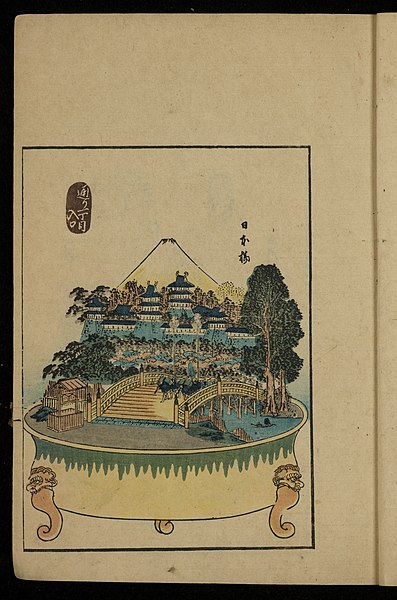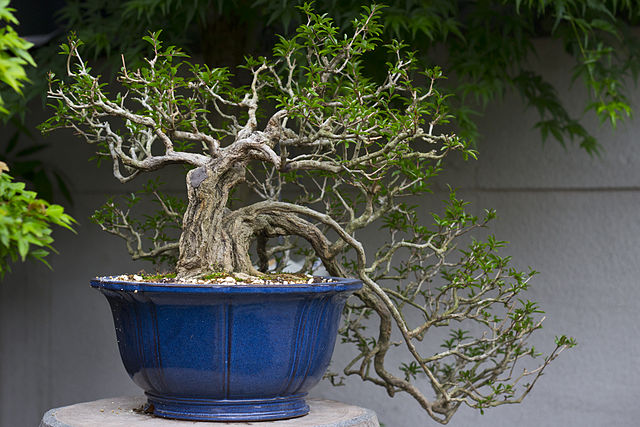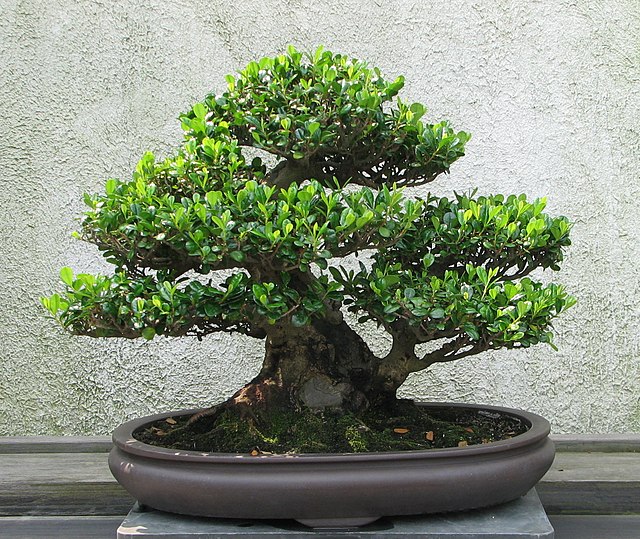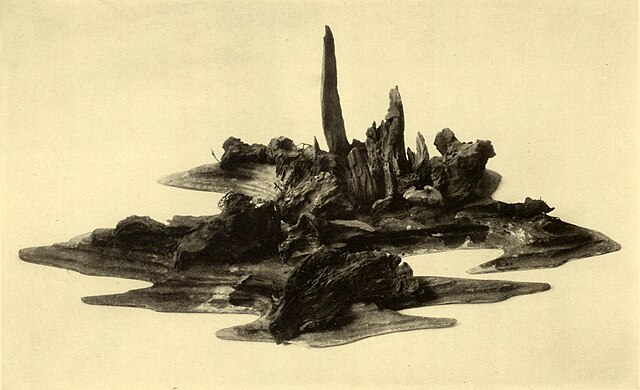A bonkei is a temporary or permanent three-dimensional depiction of a landscape in miniature, portrayed using mainly dry materials like rock, papier-mâché or cement mixtures, and sand in a shallow tray. A bonkei contains no living material, in contrast with related Japanese art forms bonsai and saikei: bonsai contain living trees, and saikei contain living trees and other vegetation.
Prints out of the "53 Stations of the Tōkaidō as Potted Landscapes" depicting Bonkei ,by Utagawa Yoshishige (1848)
Color print depicting a bonkei modeled after Station 1 of The Fifty-three Stations of the Tōkaidō
Color print of Station 1 of The Fifty-three Stations of the Tōkaidō
Bonsai is the Japanese art of growing and shaping miniature trees in containers, developed from the traditional Chinese art form of penjing. While both penjing and bonsai involve the cultivation of miniature trees, they differ in that penjing overall aims to showcase "wilder," more naturalistic scenes and encompasses a wider range of styles and designs, and may include various elements such as rocks, water features, and figurines, creating a more elaborate and dynamic scene; on the other hand, bonsai is more restrictively focused on a single tree or a group of trees of the same species, with a higher level of aesthetic refinement.
Similar versions of the art exist in other cultures, including the miniature living landscapes of Vietnamese Hòn non bộ.
During the Tang dynasty, when penjing was at its height, the art was first introduced from China.

Bonsai, named "Kenshin Tōge" (lit. 'Kenshin's mountain pass'). Japanese Yew (Taxus cuspidata) presented by Uesugi Kenshin to Nagao Masakage. The tree is estimated to be about 800 years old.
Bonsai at the Omiya Bonsai Art Museum
Bonsai at the National Bonsai & Penjing Museum at the United States National Arboretum
Kazan, 8th century.







